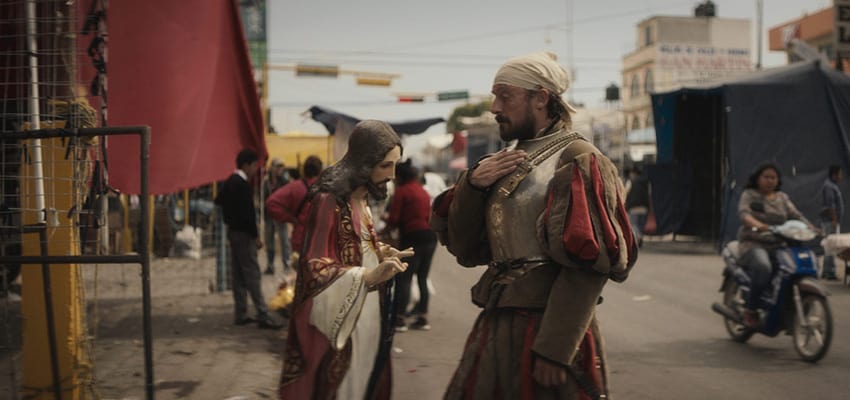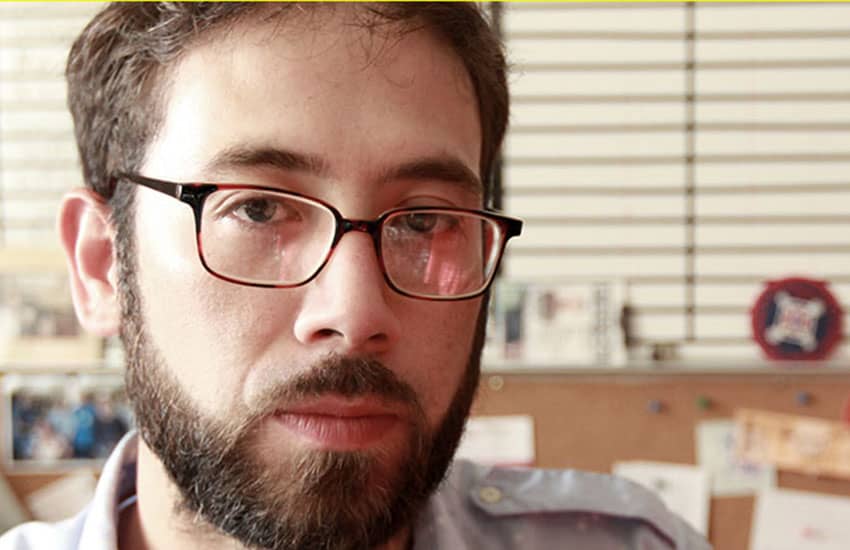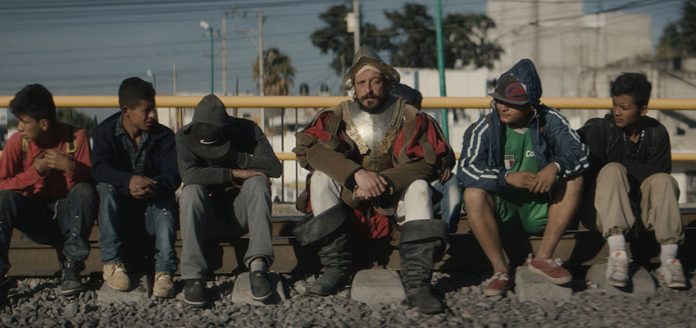If you want an education on the impact of the violence of the conquest of the Mexica by Spain on contemporary Mexico, watch the brilliantly crafted movie “499” by filmmaker Rodrigo Reyes.
Made in 2020, this movie’s release was timed to coincide with last year’s 500th anniversary of the conquest of Tenochtitlan by Hernán Cortés in 1521.
The musical background and the stunning cinematography — the latter of which won it the Best Cinematography in a Documentary Feature at the Tribeca Film Festival in 2020 — create a dreamscape backdrop to the increasingly intense stories of victims who have suffered brutal violence in modern-day Mexico.
Labeled as a docudrama, it has elements of magical realism, blurring lines between fantasy and reality, starring the ghost of a Spanish conquistador who wakes up in modern-day Mexico. Played by Spanish actor Eduardo San Juan, he is the only fictional character in the film.

All the victims who the conquistador talks to, however, are Mexicans telling their own real stories as victims of violence.
In making this decision, Reyes draws a parallel between the violent conquest of Tenochtitlan and the harsh reality for many Mexicans today. San Juan is impressive in his portrayal of the weary and bewildered conquistador who is washed up on a beach in Veracruz at the movie’s beginning — knowing where he is but not why.
This nameless conquistador begins a journey over the misty mountains and windswept dunes and bustling villages, the route he took with Cortés as they landed in Veracruz and made their way from there to Tenochtitlan, the site of contemporary Mexico City.
Along the way, this ghostly conquistador hears stories told by victims of violence, which become more intense as the movie progresses. In the background, a narrator brings to life the accounts from diaries of the conquistadors, recounting how the Spanish dehumanized the societies they encountered on their march to the Mexica capital.
One of this anachronistic character’s first encounters is at a school, where he witnesses school children waving the Mexican flag and singing patriotic songs. He interrupts the proceedings to give a speech claiming Mexico for the Spanish crown. But in the middle of it, he loses his voice.
The conquistador has been silenced — now he must just listen.
“There is a lack of listening in our world,” Reyes explained on David Peck Live in 2020. “People of power refuse to listen to victims of power.” It’s important to listen, he says, “even when it’s uncomfortable.”
Some of the scenes are jarring: the conquistador walks atop a mountain of trash and sees a jet overhead — flying over a shantytown. He reflects on past victories as he walked this same route 500 years earlier. Speaking to himself he recounts how “as we came upon temples, we burned them to the ground.”

Along his journey, he listens to the story of a young man who father was murdered by drug criminals. “He was a journalist and an activist; they kill you for being either one,” the son states sadly.
He comes across a group of people using hand drills to drill in fields seeking the smell of death emanating from the ground, meaning that they have found a clandestine grave. The conquistador meets a woman grieving for her son who disappeared five years ago.
The victims’ stories become more and more intense. When he gets to the outskirts of Mexico City, the music stops and allows the mother of a 12-year-old girl who was brutally murdered to painfully tell her story in complete and harsh silence.
He listens as a former soldier tells him how he became an expert at torture. He watches migrants attempt to jump on moving trains traveling north to the Mexico-U.S. border — risking life and limb in their desire to escape violence. Some make it, others do not. It induces a contradictory sense of hope and futility.
As the conquistador traverses a mountain of trash in the beautiful and magnificent country they conquered 500 years earlier he asks himself, “What happened to my treasure? What happened to my glory?”
Reyes seems to be saying there is no glory in the apocalyptic conquest of the Mexica by the conquistadors and that this is the result. “For me, there is a very direct connection between what happened during the conquest and what is happening today,” he told Mexico News Daily.
One beautiful scene in the movie occurs when the conquistador stops to watch a performance of the indigenous Danza de los Voladores — a cultural dance believed to be of Mesoamerican origin. He watches as the four men tethered by rope to a 30-meter pole seemingly fly through the air around it.
Reyes shows us the richness of the culture and traditions the Spanish attempted to destroy.

The movie explores the brutal legacy of colonialism on Mexico in a stark manner, made even starker by the beauty of the landscape and the accompanying musical score. Reyes portrays Mexico’s endemic violence as part of the colonial legacy still being enacted 500 years later.
Even though the conquistador begins to question his values by the end of the movie, no amount of remorse can make up for the pain and suffering of the indigenous peoples he and his fellow soldiers conquered.
“For many in Mexico, the conquest hasn’t ended,” Reyes said at a forum at San Diego State University following a screening of the film. “I thought it was important to show how we have internalized this conquistador. Sometimes we don’t understand how important history is. My responsibility as an artist is to break through to deeper truths.”
At the completion of the movie, Reyes took the film back to the victims interviewed along the way for them to view and discuss — setting up community viewings in each of the 11 locations where they had filmed.
“For me, the film was not finished until it was taken back to Mexico and shown to the people along the route,” he told Mexico News Daily.
Reyes was born in Mexico City in 1983, and at 39 is considered one of the most potent new voices in independent cinema. He currently lives in the United States. The making of “499” received financial support from the Tribeca Film Institute, the Sundance Film Institute, and the Mexican Film Institute.
Reyes has directed numerous films depicting the experiences of Mexicans living both in Mexico and the United States. His body of work includes the documentaries “Lupe under the Sun” and “Purgatorio.”
Reyes’ “499” is available to watch streaming (in Spanish without subtitles) on YouTube and the FilminLatino website.
Sheryl Losser is a former public relations executive and professional researcher. She spent 45 years in national politics in the United States. She moved to Mazatlán last year and works part-time doing freelance research and writing.
